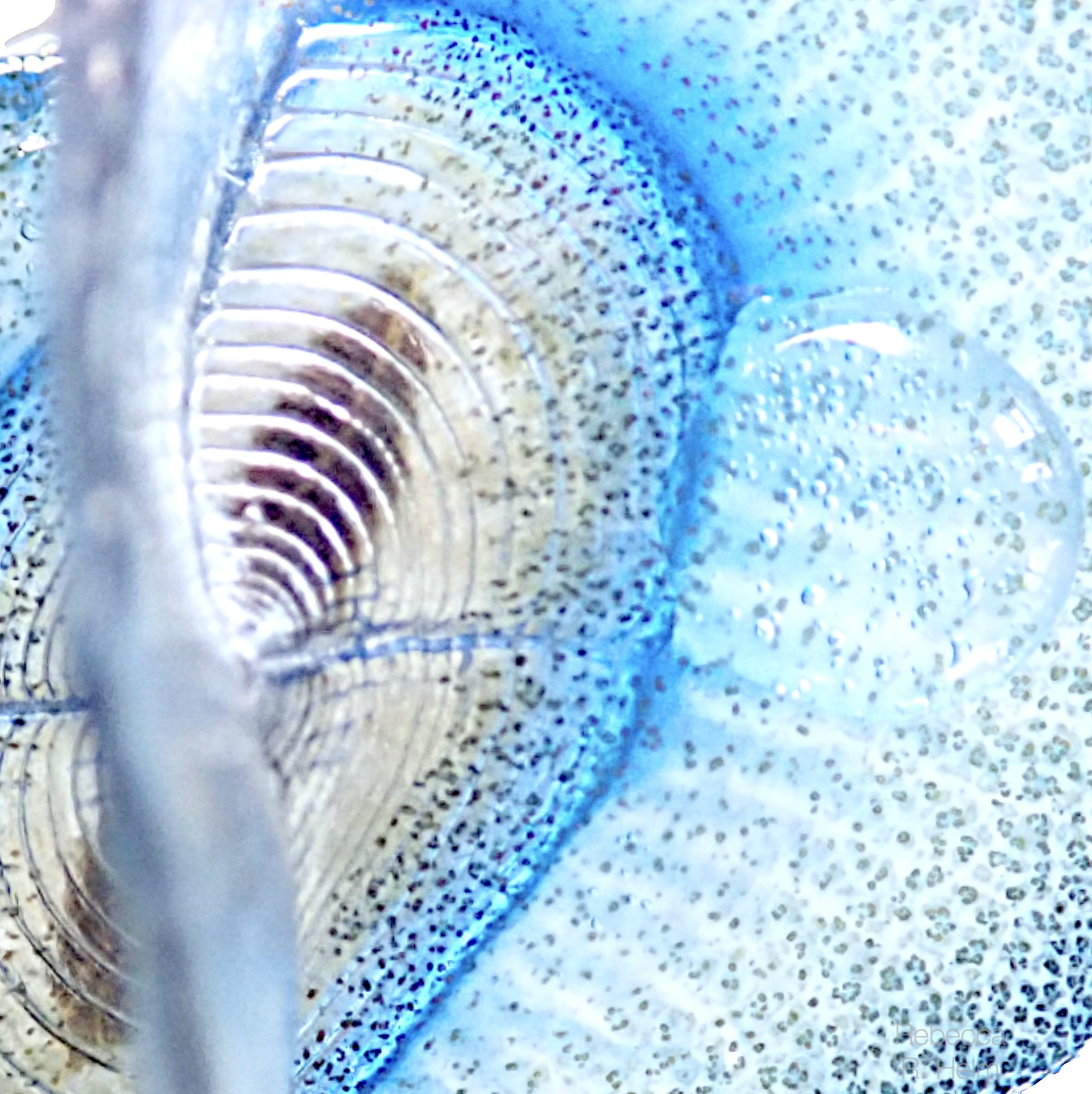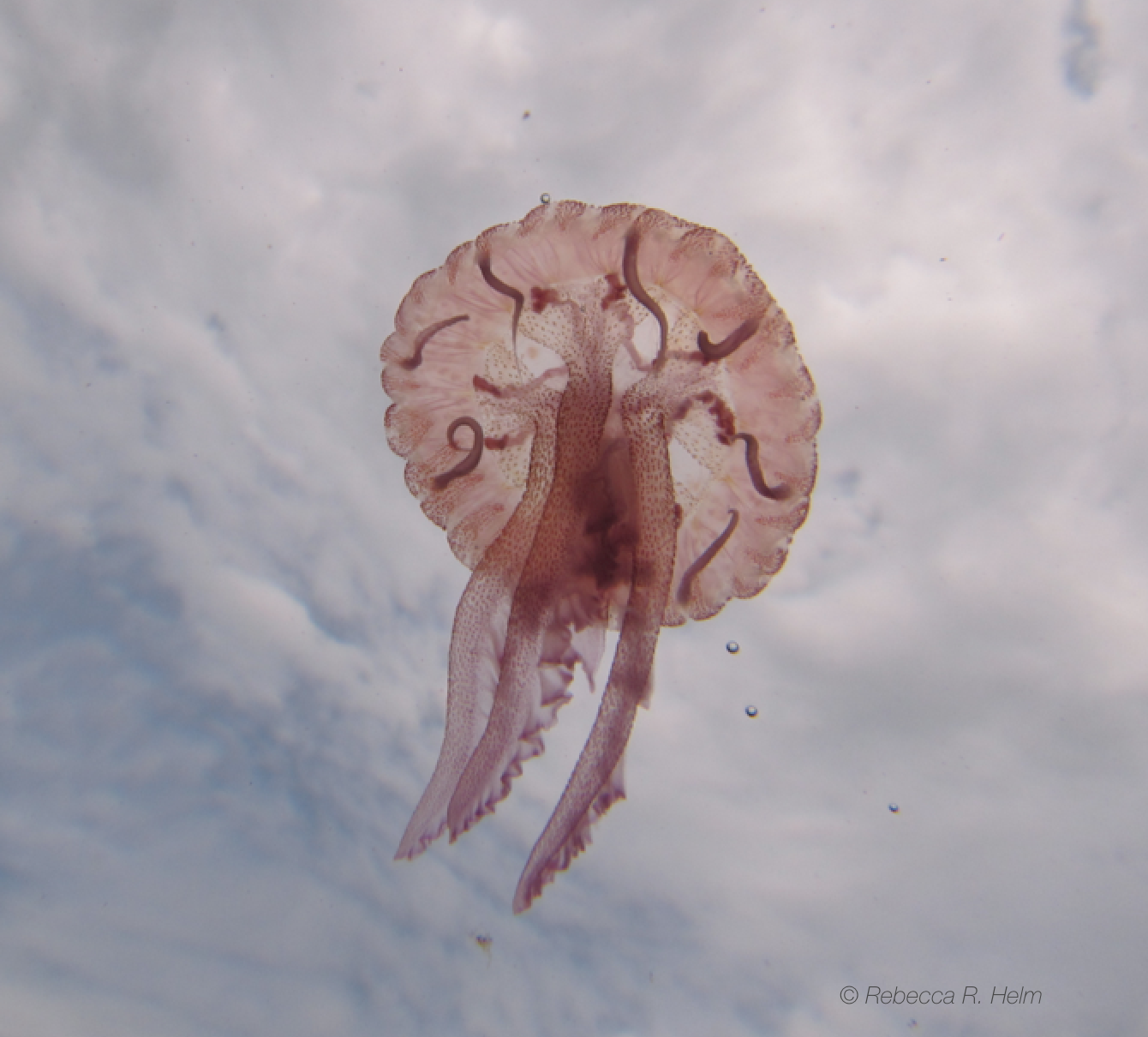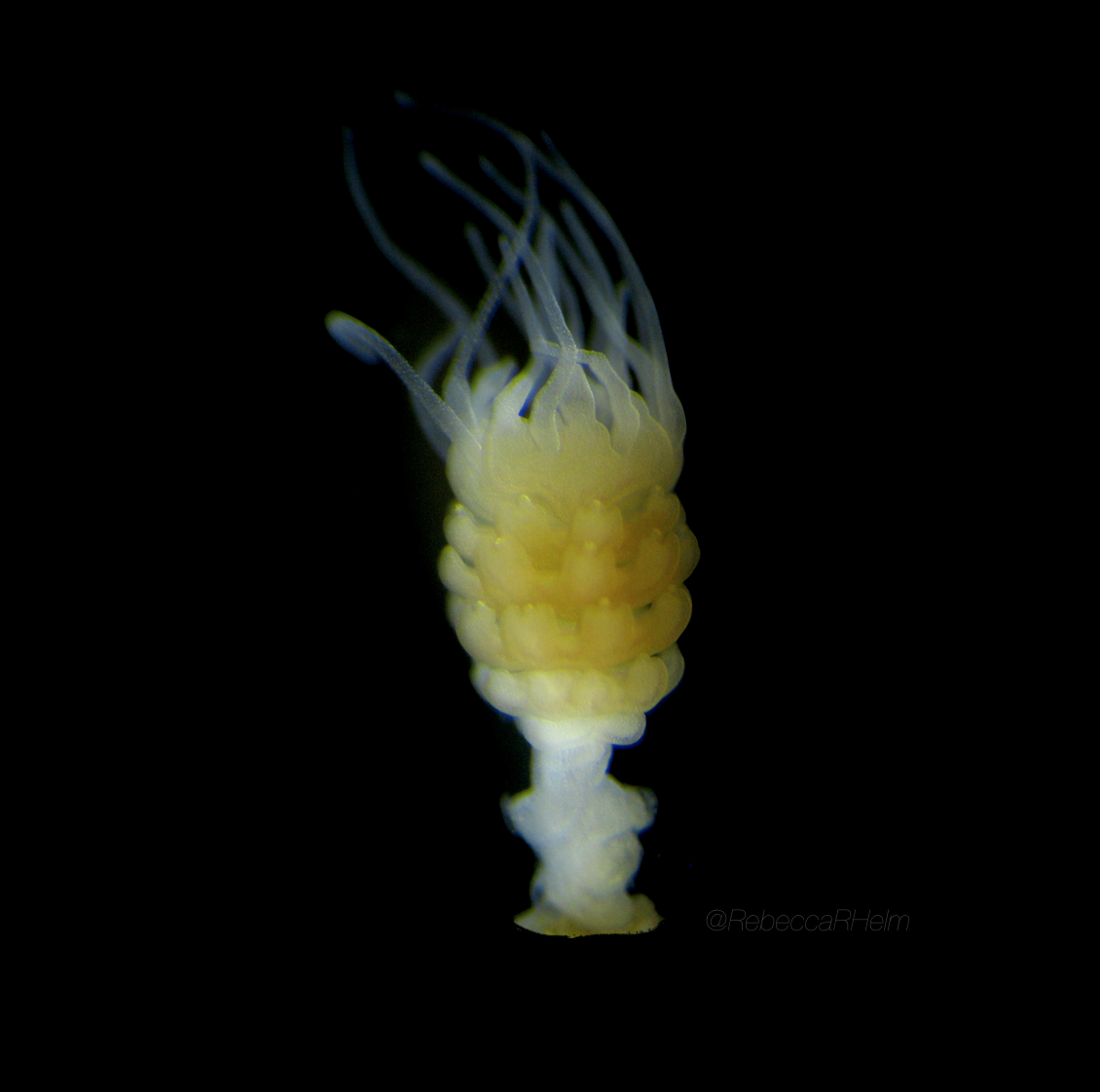Research

Floating life at the ocean's surface
Biology of the neuston
A whole ecosystem exists at the ocean’s surface. This habitat is wedged between words, influenced by both the ocean and atmosphere, and life at the surface must adapt to this borderland. Organisms at the surface create food and shelter for diverse species, from albatross to salmon, sea turtles to sunfish. Yet we know very little about surface-living species, where they live, how abundant they are, or the impacts human activity is having on their numbers. Our lab is studying the biology and distribution of life at the ocean’s surface.

Evolution of open ocean organisms
The open ocean represents over 90% of the Earth’s habitable living space. Yet many of the animals that live in the open ocean have evolved from coastal or benthic ancestors. This research focuses on the evolutionary and developmental mechanisms that allow lineages to invade the open ocean, using the open ocean mauve stinger jelly Pelagia noctiluca as a model system.

The evolution and development of metamorphosis
Jellyfish have one of the most complex life cycles of any non-parasitic animal. We use scyphozoan jellyfish as a model system to understand the molecular mechanisms responsible for changing form. In particular, we study the genes and proteins responsible for inducing metamorphosis from the benthic polyp stage, to the development of jellyfish, in a process called strobilation (pictured). In this process, polyps segment and each segment becomes a small jelly, which eventually breaks off and starts its new life. While most jellies develop this way, we do not know the genes or proteins responsible for this transition, and my lab is working to shed light on this phenomenon.
